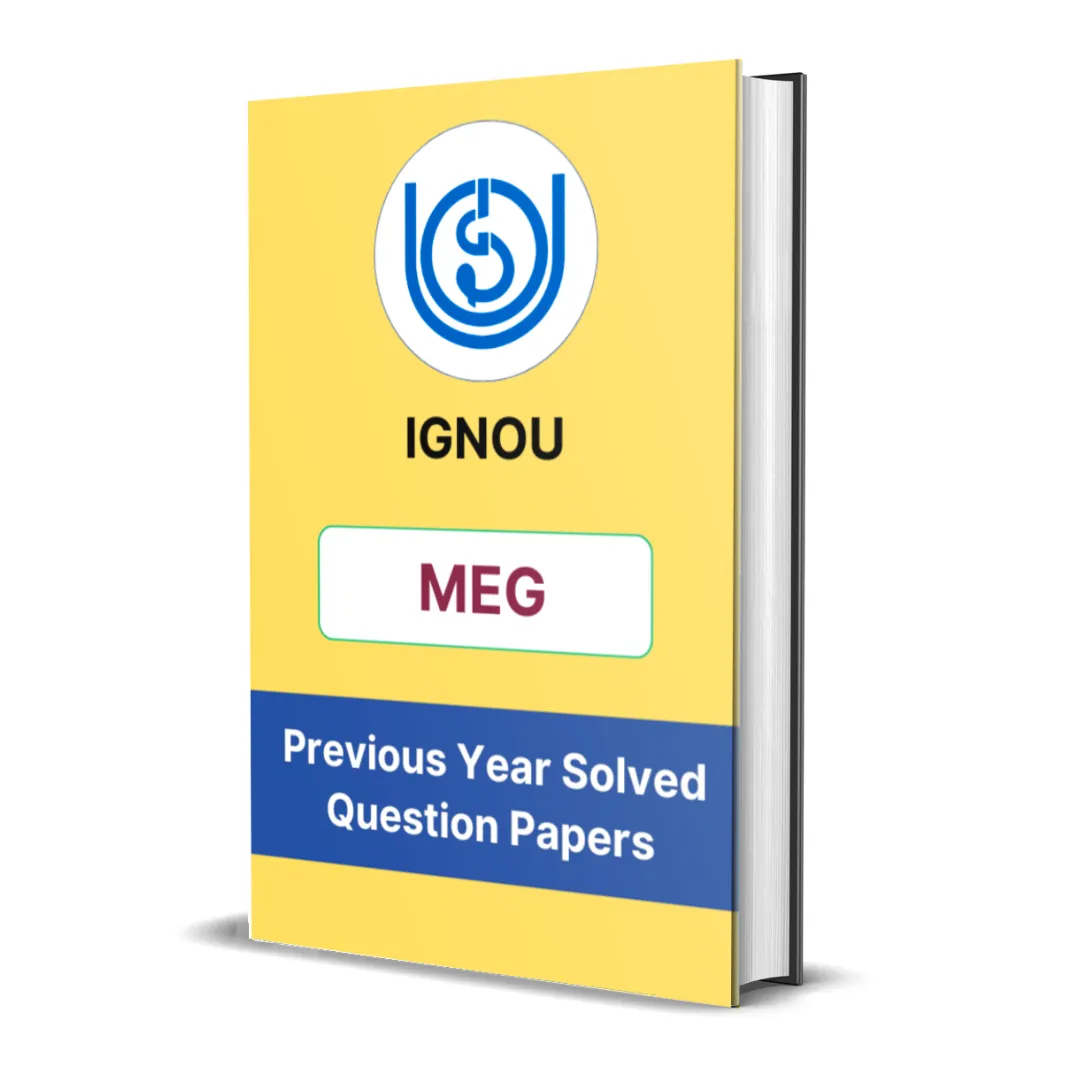Here you will get the detailed summary of IGNOU MEG 10 Block 7 – Evolutions of Canons in Indian English Writing.
We have provided the summary of all units starting from unit 1 to unit 4.
Introduction
IGNOU MEG-10 Block 7 focuses on “Evolutions of Canons in Indian English Writing”, offering a critical exploration of how literary canons have been formed, challenged, and diversified in the Indian context. The block examines the shifting criteria of literary value in Indian English writing, especially as they relate to political ideologies, cultural movements, gender perspectives, and caste consciousness. It moves beyond traditional canon-making to include Gandhian, nationalist, feminist, and Dalit voices, showing how the Indian English literary space has become increasingly inclusive and representative of India’s complex socio-political realities.
Unit 1: Canon Making in the Era of Gandhi, Nehru, Socialism
This unit explores the formation of literary canons during India’s freedom movement and the early post-independence period, shaped by figures like Mahatma Gandhi, Jawaharlal Nehru, and the broader ideology of socialism.
Key points include:
-
Literature during this era was deeply engaged with questions of nationhood, social justice, and morality.
-
Writers were often seen as nation-builders, and their texts reflected Gandhian values like non-violence, truth, and simplicity, or Nehruvian ideals like scientific temper and progress.
-
Canonical works were those that promoted national unity, social upliftment, and ethical reform.
The unit critiques how this canon was shaped by ideological alignment, often marginalizing dissenting or regional voices in the name of national integration.
Unit 2: Tagore, Premchand, Mulk Raj Anand, and Raja Rao
This unit studies four major figures in Indian literature—Rabindranath Tagore, Munshi Premchand, Mulk Raj Anand, and Raja Rao—and their impact on the Indian English literary canon.
Highlights:
-
Tagore contributed to both Bengali and Indian English traditions, often with a philosophical and spiritual sensibility.
-
Premchand, though he primarily wrote in Urdu and Hindi, is canonized for his social realism, especially his focus on poverty, caste, and rural oppression.
-
Mulk Raj Anand addressed class struggle and caste discrimination, bringing the lives of outcastes and labourers into the literary mainstream.
-
Raja Rao combined philosophy and storytelling, offering a metaphysical exploration of Indian identity through novels like The Serpent and the Rope.
This unit shows how the canon expanded to include voices that grappled with modernity, tradition, and marginalisation, even as English remained a contested medium for Indian expression.
Unit 3: Feminism – Indian English Writers
This unit focuses on the emergence and consolidation of a feminist canon in Indian English literature, highlighting women writers who challenged patriarchal narratives and gave voice to gendered experiences.
Key themes include:
-
Writers like Kamala Das, Shashi Deshpande, Anita Desai, Arundhati Roy, Githa Hariharan, and others redefined Indian womanhood, exploring desire, resistance, trauma, and autonomy.
-
Feminist literature often critiques marriage, domesticity, motherhood, and societal norms, offering counter-narratives to male-dominated texts.
-
The canon of Indian English feminist writing reflects diverse socio-economic, regional, and cultural realities, resisting homogenization.
This unit emphasizes that gender is a crucial axis of canon formation, and feminist literature continues to challenge both literary form and social orthodoxy.
Unit 4: The Dalit Canon
The final unit introduces the Dalit literary canon, which emerges from the lived experiences of caste oppression and social exclusion. While Dalit literature in India has flourished mainly in regional languages, Indian English is increasingly becoming a medium for Dalit self-expression and resistance.
Key points include:
-
Dalit writing is rooted in autobiography, protest, and political assertion, with a commitment to truth-telling and social change.
-
The canon includes voices like Bama, Omprakash Valmiki, Kancha Ilaiah, Sharan Kumar Limbale, and others.
-
Dalit literature often questions the aesthetic values of upper-caste literature, asserting that experience and justice are central to literary worth.
-
The formation of a Dalit canon in English is part of a larger movement to de-Brahminize academia, open up publishing platforms, and challenge cultural silencing.
This unit affirms that Dalit literature is not a peripheral or niche domain, but a vital and transformative force within Indian English writing.

